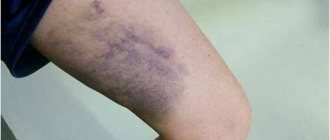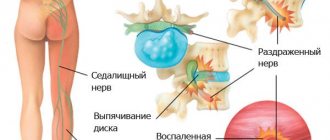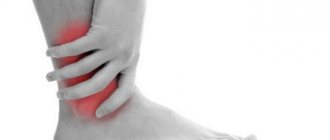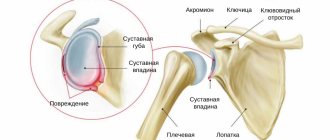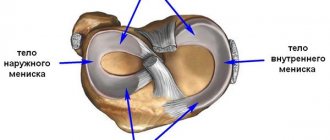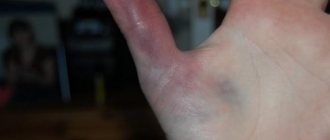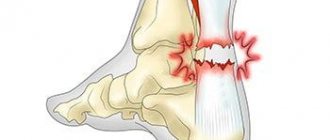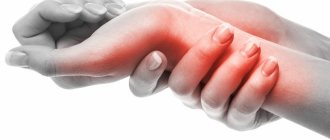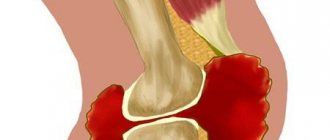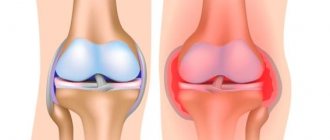Content
- Cervical spine traction: features of the method
- Stretching the neck muscles: in what cases is it used?
- Expert opinion
- Traction of neck muscles using the Ormed device
The importance of the cervical spine for human health cannot be overestimated: this is where the main blood vessels, respiratory and digestive tracts, etc. are concentrated. Therefore, pain that arises in this department causes extraordinary discomfort and must be treated immediately, and the most accessible method for this is neck traction.
Medical professionals successfully use various methods of stretching the muscles of the neck and back, so our patients can be confident that we will be able to select the optimal treatment method that is suitable specifically for their case.
You can verify the effectiveness of treatment for neck pain in our center with the help of photos, videos about our method, as well as numerous positive reviews from our patients.
During traction, the traction load does not exceed 4-7 kg, this helps to increase the distance between the cervical vertebrae, release the pinched nerve root, and improve blood supply to the brain.
A selection of exercises for entry-level
A set of exercises should be performed after warming up. Read more about warming up before stretching →
Stretching and lengthening of the sternocleidomastoid muscle
- From a standing or sitting position on a mat with your legs bent under your own body.
- Smoothly tilt your head down and tilt it back slightly.
- For better traction, apply light pressure with your hands.
- Make turns left and right in the same way.
- Hold each position at maximum tension for 3-5 seconds.
Head tilt with arm abduction
When performing exercises, the lateral muscles of the neck are actively stretched.
- From a standing position, make smooth tilts of your head to the right and left.
- To enhance the stretch, pull your head diagonally to the side with your hand.
- Perform 5 inclines, holding each for 5 seconds.
Stretching the scalene muscles of the neck
- From a sitting position on the mat, place your legs comfortably bent at the knees in front of you and lean back, leaning on your straight arms.
- Smoothly lower your head back without throwing it back too much.
- Make sure your shoulders don't jump towards your ears.
- Do 5 repetitions, holding the position for 5 seconds.
Relieving tension from the back and neck
A great exercise to relieve muscle tension and take a breather. Recommended for use after any stretching workout.
- From a sitting position, bending your legs under you.
- Lower your forehead onto the mat.
- Relax your back and neck, stretch your arms forward.
- Hold the position for 15 seconds.
Next, more complex exercises for those who are prepared.
Severe stretching of the back of the neck
The main effect of stretching is on the splenius muscle of the neck.
- From a supine position.
- Tilt your straight legs back, pointing them further behind you.
- Feel the stretch in your neck and back.
- Hold the position for 10 seconds.
Severe stretching of the front and sides of the neck
- Sit on the mat, resting on your knees.
- Wrap your arms around your ankles and pull your chest up.
- Feel the stretch in your neck and shoulders.
- Hold the pose for 10 seconds.
Cervical spine traction: features of the method
Traction of the neck, as well as the spine, can occur in different ways. For example, this can be done either manually or using a machine. There are also known methods for stretching the neck using various loops, simple and inexpensive devices that can be easily used even at home. All these methods involve applying a directed load to the cervical spine, which helps reduce pain, return discs and vertebrae to their “places,” relieve spasms, and relax muscles. The choice of a specific method depends on the type of disease and the patient’s condition.
For any disease, it is very important not to overdo it with the load, because in this way you can only aggravate the situation and provoke complications. Therefore, before starting treatment, you must consult your doctor and get his recommendations. In our center you can sign up for a consultation with a specialist on any issues related to neck and spine problems.
Sign up for treatment
Gymnastics for the neck: the best exercises
02.09.2021
In order to not be bothered by neck , you need to warm up the muscles with the help of special simple exercises.
1. Turning the head with emphasis. This simple exercise will be very effective. You need to stand up and keep your back , cover
temple with the inside of the palm . In this case, the fingers should be on the back of the head. With a little force, you need to lightly squeeze your temple with your palm.
and carefully turn your head, while trying to overcome the resistance. This exercise is done ten times for both sides. For that
For it to really bring benefits, you need to do the exercise every day.
2. Moving head forward with emphasis. A very effective exercise when repeated regularly. As in the previous exercise, here
you need to stand and straighten your back . Placing your palm on the frontal part of your head, you need to lightly press on your head, while moving your head forward.
Must be repeated ten times.
3. Bend your neck forward while lying down. One of the simplest exercises to help your neck relax. All you have to do is lie down
back onto a rubber yoga mat and begin to lift only your head, only forward. At the same time, it is important to hold your entire body, pressing it firmly to the mat.
After this exercise, you will immediately feel the pain go away from the cervical region. Like the previous two, this exercise must also be repeated ten times.
4. Shoulder Raise. This exercise really helps you relax and unwind. You need to stand straight in the pose, and your feet should be shoulder-width apart.
You should raise your shoulders up and down. At the same time, your arms should be lowered, your head should not turn anywhere, your gaze should be focused on one point.
This exercise should be repeated twenty times.
5. Draw a circle using the shoulders. You need to take the same pose as in the previous exercise, but at the same time raise your shoulders not just up, but lift them
as if a circle is being drawn. Twenty times one way and twenty times the other. A very useful exercise, especially for those who spend a lot of time
computer, which causes discomfort and tension in the shoulders and neck .
6. Wrap your arms around your shoulders. Also a useful exercise for relaxation. You need to stand straight, move your arms to the sides, opening your palms . Necessary
clasp your shoulders crosswise on your chest This exercise is also good for your arms. It should be repeated twenty times.
7. Half frame. A very interesting exercise. Performed while sitting. You need to sit up straight and straighten your arms. With one hand, grab the elbow of the other hand and
At the same time, turn your head in the opposite direction, burying your chin in your shoulder. This exercise is done on one side and the other at once, alternating.
You need to repeat it twenty times.
8. Stretching. A very good relaxation exercise. You need to take the form of a fetus and pull yourself by the neck . This exercise is done over
one minute. And it works very well for various parts of the spine .
As you can see, the exercises are very original, but at the same time simple and suitable for everyone. They should not be neglected.
Repeating this exercise daily will help keep your neck and spine for a long time.
Published in Articles without category Premium Clinic
Stretching the neck muscles: in what cases is it used?
The traction process itself is quite universal and is used for different indications. Cervical spine traction may be necessary:
- for various curvatures (scoliosis);
- for various curvatures (scoliosis);
- with torticollis;
Traction of the neck during a hernia at its different stages helps to return the vertebrae to their places and reduce (and even completely disappear) the hernia itself. In the event that destruction processes have already begun in the vertebrae and tissues, stretching is carried out under the supervision of a specialist. The same can be said about traction of the cervical spine during protrusion. Therefore, it is very important not to self-medicate, but first of all to consult a specialist. Only a competent doctor can understand the overall picture of the disease and prescribe the correct course of treatment.
Warm-up with neck stretching
- Stand up straight, look straight ahead.
- Keep your elbows straight and your arms in place to prevent your shoulders from moving during the stretch.
- Slowly turn your neck towards your shoulder until it stops.
- Maintain this position for 10-30 seconds.
Variations:
As you twist your head, lift your chin up slightly to place more emphasis on the sternocleidomastoid muscle.
Muscles involved: Upper trapezius Sternocleidomastoid Splenius capitis
According to doctors, osteochondrosis of the spine is treated by stretching it. Special exercises that are performed correctly and honed are effective in the treatment and prevention of osteochondrosis. Stretching relieves tension and discomfort.
Traction of neck muscles using the Ormed device
Separately, it is worth considering traction using special equipment. In the medical department, spinal traction is performed using the Ormed-Professional apparatus. This device allows you to very accurately determine the load, thereby not overloading the damaged area and without causing any complications. In addition, it is possible to regulate both the load itself and its direction.
Physiotherapist-rehabilitologist Irina Viktorovna Skrypova comments:
If you experience any discomfort or pain in the neck area, we advise you to seek advice from our center. The specialists working here will accurately determine the nature of the damage and prescribe the optimal course of treatment.
Sign up for treatment with us by phone +7 495 134 03 41
or leave a request on the website.
Author of the article:
Litvinenko Andrey Sergeevich
Orthopedist
Make an appointment
Recent publications by the author:
- Myostimulation (electromyostimulation) for weight loss
- Shock wave therapy of the hand
- Where can I get an ultrasound of my hand?
- Ultrasound of the wrist
Jaw Information
The jaws are a pair of bones that form the base of the mouth and teeth (see Figure 1).
- The maxilla is the upper jaw bone.
- The mandible is the lower jaw bone.
- The temporomandibular joint is where the lower jaw attaches to the skull.
- The masseter muscle is the muscle that connects the lower jaw to the skull.
Figure 1. Bones and muscles of the jaws
The opening and closing of the mouth is controlled by many muscles and nerves located around the jaws. Most people can open their mouth 35–55 millimeters (1.4–2.2 inches), which is the width of three fingers (see Figure 2).
Figure 2. Normal open mouth height
to come back to the beginning
Our doctors
- LITVINENKO Andrey Sergeevich
Traumatologist orthopedist Sports medicine doctor Experience: 19 yearsSign up
- SKRYPOVA Irina Viktorovna
Physiotherapist rehabilitator Experience: 20 yearsSign up
- MOISEENKO Alexey Yurievich
Traumatologist orthopedist Sports medicine doctor Experience: 17 yearsSign up
- KHOLIKOV Timur Vyacheslavovich
Traumatologist orthopedist Sports medicine doctor Experience: 19 yearsSign up
About trismus
Trismus can occur at any time, immediately after or even years after treatment. This condition may occur in the following cases:
- if you have a tumor affecting the bones, muscles and nerves that control the opening of your mouth;
- after surgery on the head and neck organs;
- after radiation therapy in the head and neck area.
Trismus can occur when fibrosis (scarring) develops during the healing process of tissue after surgery. In addition, fibrosis may worsen years after radiotherapy.
If you cannot open your mouth wide enough, it will be difficult for the health care provider to examine your mouth. In this regard, problems may also arise with:
- oral hygiene (keeping the mouth clean and brushing teeth), which can lead to bad breath, tooth decay and oral infections;
- chewing and swallowing, which may make it difficult for you to eat and drink;
- speech;
- kisses;
- insertion of a breathing tube, for example if you ever need general anesthesia (a drug given to keep you asleep during an operation or procedure);
- carrying out routine dental treatment.
When trismus occurs, its treatment is very difficult. This is why it is important to prevent trismus and treat the condition as early as possible.
to come back to the beginning
Insert into place
But what if the back is really torn? First, everything needs to be returned to its place
. It is better if a good chiropractor does this, but sometimes you can do it yourself. How were ways to deal with a broken back discovered? Oddly enough, this was facilitated by the Inquisition’s sophisticated methods of torture. Inquisitors stretched out those suspected of witchcraft, trying to inflict pain on the tortured person and force him to confess to all his sins. However, sometimes after such torture the “sorcerer” felt relief from his chronic pain. However, nowadays you can do without a torture table - there are more advanced means.

